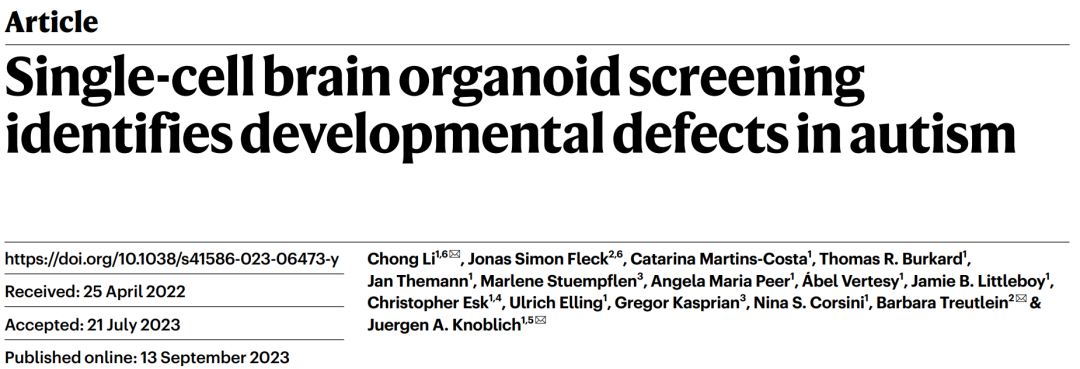
Source: BioArt
Human brain organoids, a revolutionary field of research, are helping us gain a deeper understanding of the developmental deficits of autism through high-throughput gene editing and single-cell sequencing. This 3D organoid is differentiated in vitro from embryonic stem cells, or pluripotent stem cells, to simulate key processes of brain development at the molecular, cellular, and tissue levels. In recent years, human brain organoids have been widely used to study the pathogenesis of brain diseases caused by genetic defects, including cerebellum, autism and neurodegeneration.
Human brain organoids are notable for their ability to reproduce dynamic developmental processes and cellular diversity in the body, making them powerful biological models. However, due to the need for relatively long time in vitro culture and certain tissue diversity, phenotypic studies of each disease-causing gene usually require multi-directional and multi-locus analysis. Because of this, scientists urgently need a high-throughput gene editing and high-resolution phenotypic analysis technology to significantly accelerate the study of disease-causing gene function. However, the application of this technology to 3D organoid models is not mature enough at present.
On September 13, 2023, The team of Juergen A. Knoblich and ETH Treutlein of the Institute of Molecular Biotechnology of the Austrian Academy of Sciences (Chong Li for Joint Communication and Joint Work) published an article in Nature: Single-cell brain organoid screening identifies developmental defects in autism. The research team has developed a novel high-throughput gene editing and single-cell transcriptome sequencing technology (CHOOSE System) that takes our understanding of autism to a new level.

The study authors made full use of this technique to simultaneously edit out a single gene of 36 highly pathogenic autism genes in different cells in human brain organoids. After a long period of development in vitro (4 months), these brain-like organs had a complex cellular diversity, including neural stem cells, cortical excitatory and inhibitory neurons, and glial cells, which enabled the authors to conduct detailed comparative analysis of phenotypes using single-cell transcriptomes. The researchers found that some cell types, such as intermediate progenitors, surface excitatory neurons, and inhibitory neuronal progenitors, were more susceptible. In addition, through in-depth intracellular molecular analysis, the researchers also found many genes whose expression is affected, as well as changes in biological pathways, providing systematic and comprehensive phenotypic data for future autism research. At the same time, by analyzing the single-cell transcriptome and chromatin accessibility, the authors used a multi-layered bioinformatics approach to identify important gene regulatory networks associated with autism.
In phenotypic analysis, the researchers found an interesting phenomenon that gene knockout of three members of the BAF complex (ARID1B, BCL11A, and SMARCC2) resulted in the enrichment of a type of ventral neural stem cell (ventral radial glia cells), The BAF complex plays a key role in regulating the fate regulation of ventral cerebral cortex cells. Finally, the researchers used pluripotent stem cells derived from patient cells with the ARID1B mutation to differentiate into brain-like organs, successfully confirming what had been observed in previous screenings. This combination of high-throughput screening and validation in patient-specific contexts fully demonstrates the effectiveness of using organoids to study neurodevelopmental disorders.
In summary, the research team developed the CHOOSE system and used brain organoids to explore the functional characteristics of high-risk autism genes. Through high-throughput gene editing and high-resolution single-cell genome analysis, this study provides a phenotypic database covering developmental and cell type specificity for autism genetic research. In addition, the researchers identified specific cell types and gene regulatory networks that are more susceptible to autism, which will require more research attention in the future. The CHOOSE system provides a systematic, quantitative, high-throughput, and high-resolution technique for studying disease-causing genetic phenotypes, not only for the study of brain diseases, but also for studying the mechanisms of diseases in other organ systems. This will deepen and accelerate our research into the mechanisms of genetic disease.
Original link:https://www.nature.com/articles/s41586-023-06473-y